A computer made from human BRAIN could solve the world’s energy crisis – here’s the scientist turning science fiction into reality
There is a lot of fear that robots will replace humans. But maybe it should be the machines that worry about us.
Swedish scientists have created the world’s first ‘living computer’ made from human brain tissue.
It consists of 16 organoids, or clumps of brain cells grown in a laboratory, that transmit information to each other.
They work just like a traditional computer chip: they send and receive signals through their neurons that work like circuits.
But what makes them special is that the living machine uses less energy, because living neurons can use well over a million times less energy than the current digital processors in use today.
FinalSpark co-founders Fred Jordan and Martin Kutter (Photo FinalSpark)
Compared to the best computers in the world, such as Hewlett Packard Enterprise Frontier, the scientists found that for the same speed and a thousand times more memory, the human brain consumes 10 to 20 watts, compared to a computer that consumes 21 megawatts.
One megawatt is equal to one million watts.
The living machine was developed by scientists at FinalSparks, which focuses on creating solutions with biological neural networks.
Dr. Fred Jordan, co-CEO of FinalSpark, a startup focused on creating solutions with biological neural networks, told DailyMail.com: ‘This idea is common in science fiction, but not much real research has been done on it.’
Organoids are small, self-organized three-dimensional tissue cultures made from stem cells.
Such cultures can be made to replicate much of the complexity of an organ, or to express selected aspects of it, such as producing only certain types of cells.
Scientists take the stem cells and cultivate them for about a month until they form characteristics such as neurons.
FinalSparks’ mini brain is made up of an estimated 10,000 living neurons with a diameter of approximately 0.5 mm
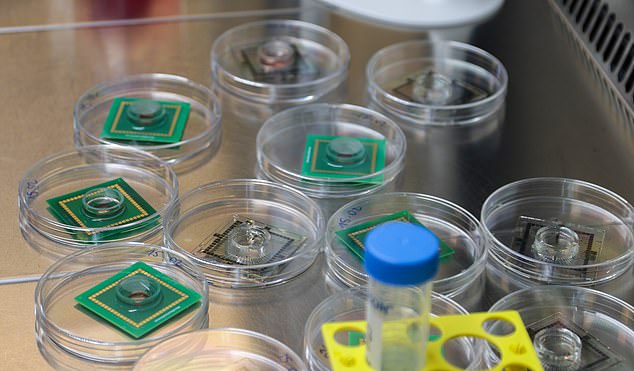
The ‘organoids’ can store information transmitted by electrodes (Photo FinalSpark)
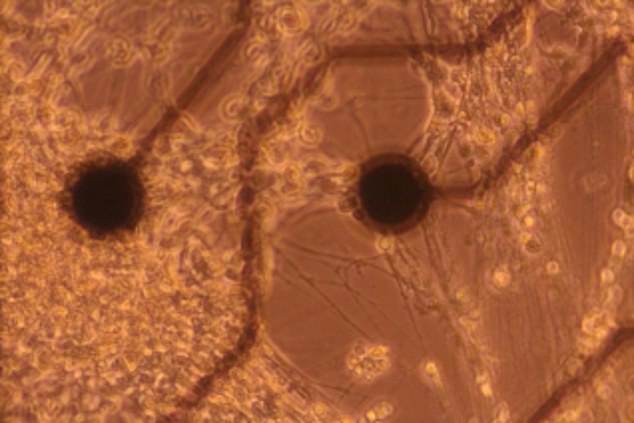
Information is transferred to the ‘brain’ via electrodes (Photo FinalSpark)
The organoids are trained with doses of dopamine. If they complete tasks correctly, they receive a stream of the chemical as a reward.
Scientists administer dopamine by exposing a certain area of the brain organoid to light – similar to how it is released in the human brain when a certain area is activated.
The mini-brain is surrounded by eight electrodes that measure activity in the organoids, and the researchers can send current through the electrode to affect the neuron.
These electrodes perform the dual role of stimulating the organoids and recording the data they process.
The organoids are also housed in a microfluidic incubator that acts as a mini conduit system for small amounts of fluids, delivering nutrients to the cells and providing nutrients needed to keep them alive.
The incubator keeps the organoids at body temperature and automates the flow and maintenance of cellular media, creating a stable environment free of bacteria and viruses.
The cells in the ‘living computer’ live and die within 100 days, clumped together in a 3D organoid structure.
But they resemble those in real human brains and have similar electrical activity.
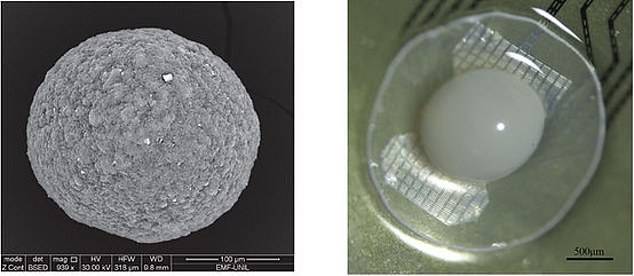
The organoids are trained with doses of dopamine. If they perform well, they receive a stream of the chemical as a reward
‘The neurons in your brain last about 80 years; When you die you have the same neurons as when you were born. We are not as good as nature at keeping them alive, so they live for a hundred days.”
And scientists simply grow new organoids to replace the dead ones.
The team recently launched the brain computer as an online platform that allows global researchers to remotely conduct in vitro experiments on biological neurons.
Three dozen universities have already expressed interest in using the platform
Jordan described the “living computer” as “wetware” because – like real human brains – it sits somewhere between computer hardware (i.e. the chips that process information) and software (the programs that run on the hardware).
“We call it ‘wetware’ — I don’t know who came up with the word — but the brain is between software and hardware,” Jordan said.
‘With computers there is a clear separation, you run different software on the same hardware.
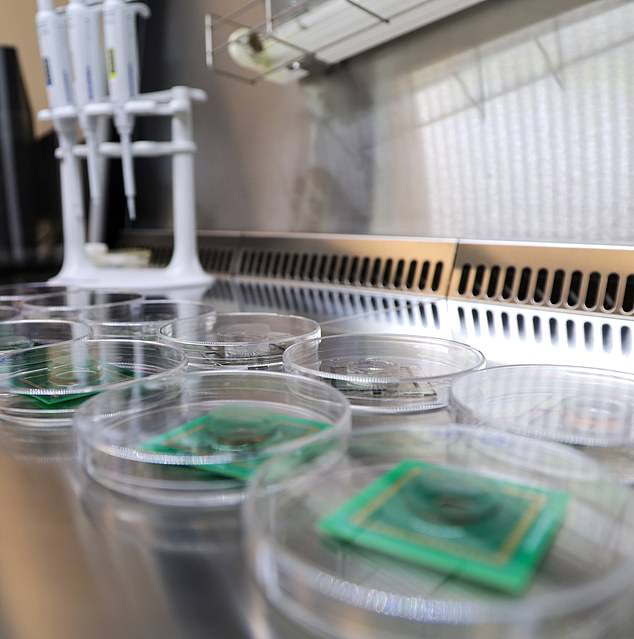
The ‘organoids’ are accessible online (Photo FinalSpark)
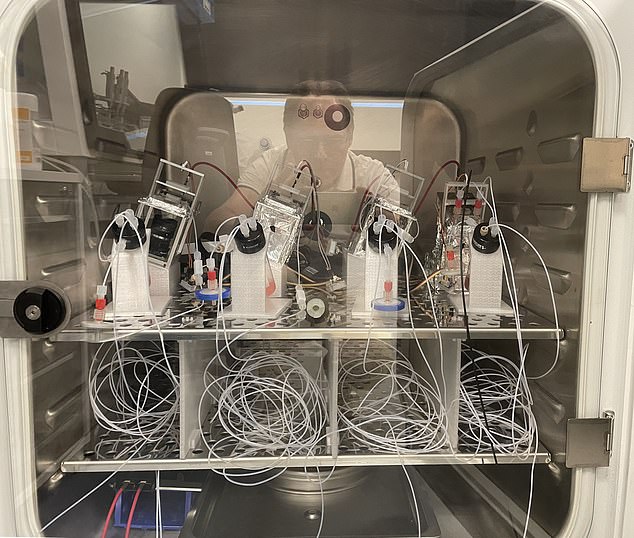
The organoids store information in the form of a ‘biobit’ (Photo FinalSpark)
‘But in our brains, to learn something, you physically change the hardware that makes the synaptic connections. So we need a new word, and ‘wetware’ makes sense because cells need a wet environment to survive.”
The world is in the midst of an energy crisis due to fuel shortages, supply chain disruptions, geopolitical tensions and the transition to renewable energy.
Not to mention the rise of AI, which is expected to use 29.3 terawatt hours per year – one terawatt equals one trillion watts.
what are the next steps?
For now, the company’s focus is on cloud computing, specifically the power-hungry data centers that power AI.
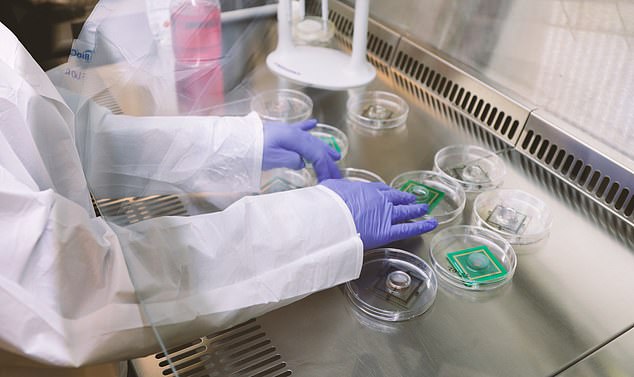
Researchers work with the ‘Organoids’ (Photo FinalSpark)
Labs and universities around the world are already connecting to FinalSpark to test the hardware.
Later this month, Jordan will visit the world’s first ‘biocomputing’ conference, which will take place in Vienna this month, with visitors from Australia and the US: “I don’t think the organizers knew how many people there are,” he laughed.
He said that since the publication of his findings, the phone has not stopped ringing: “A lot of people are calling to offer me money,” he said.
Another potential breakthrough is a new insight into the human brain itself, which could lead to cures for diseases.
The technology to create organoids is relatively new, and little research has been done into the idea of turning human neurons into a computer.
